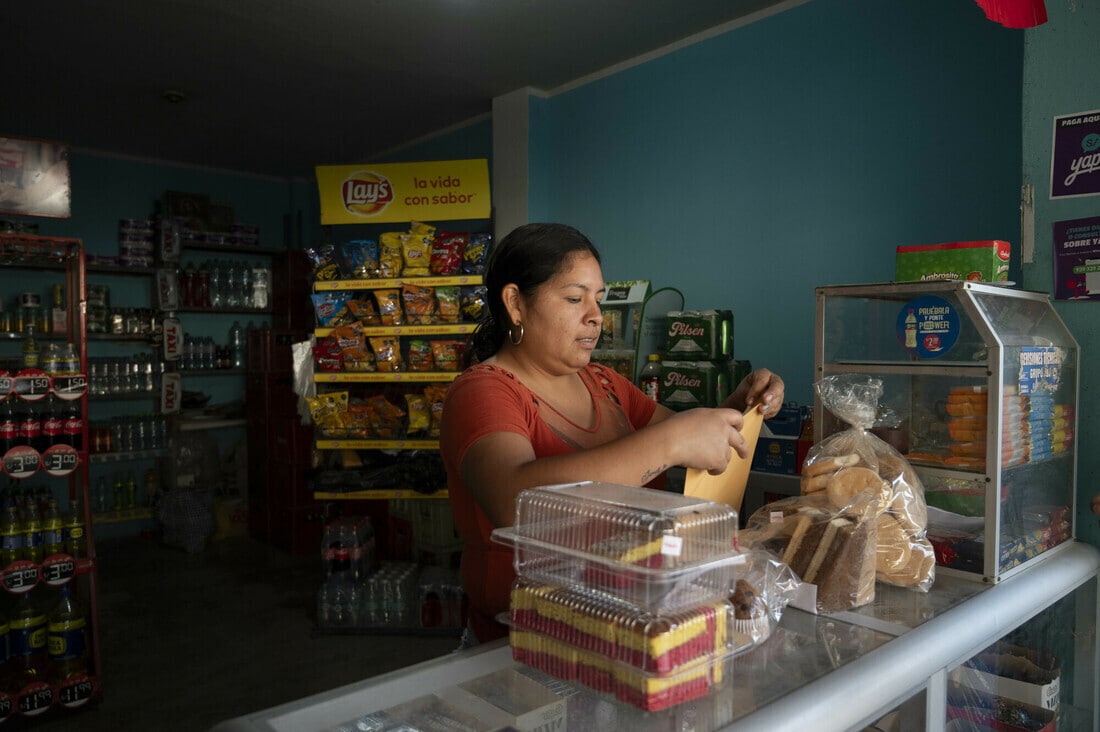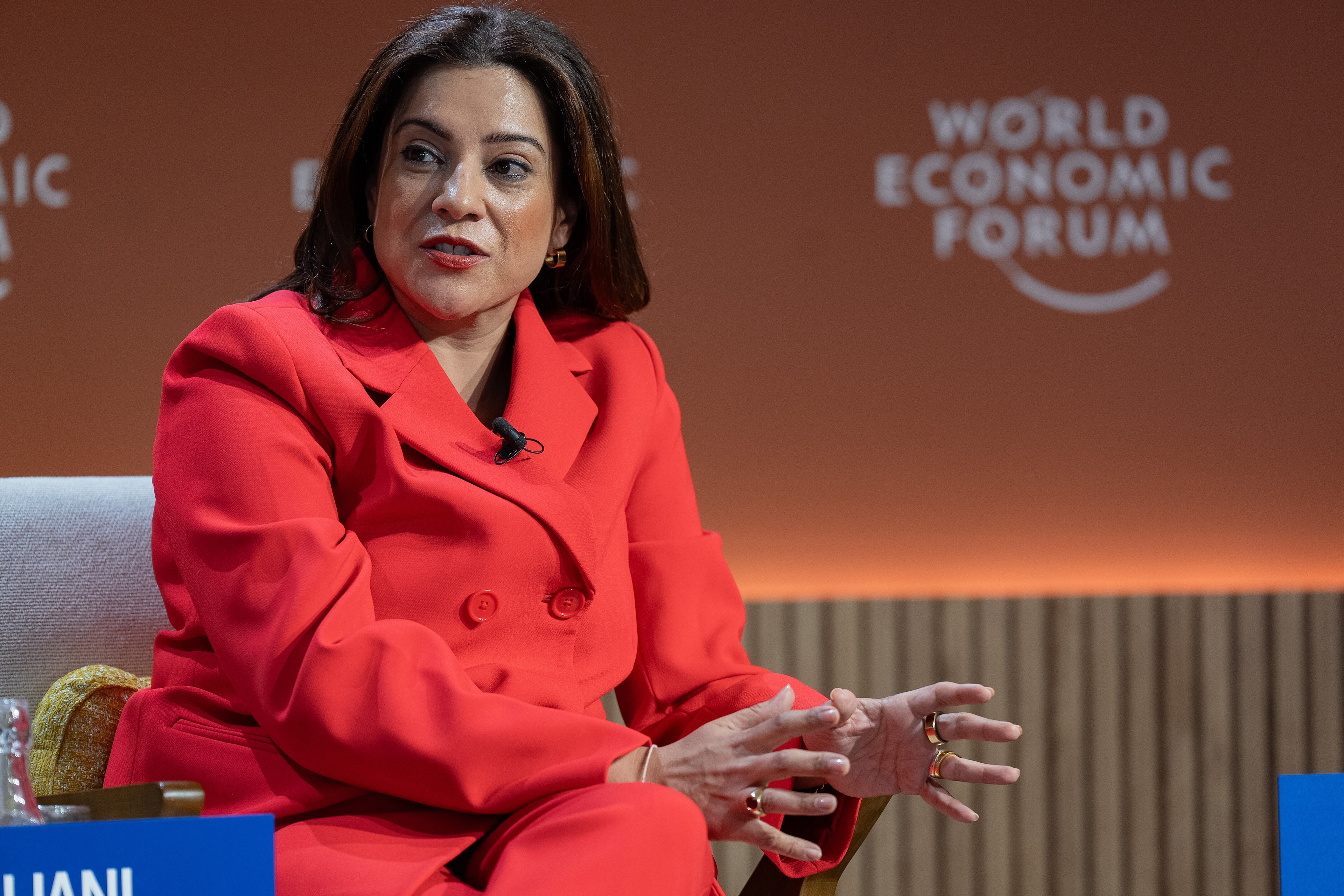4 ways investors can help women entrepreneurs thrive by adopting a gender lens approach

Taking a gender lens approach to investing can empower women entrepreneurs. Image: Blake Dunlop / Root Capital

Get involved with our crowdsourced digital platform to deliver impact at scale
Stay up to date:
Society and Equity
Listen to the article
- The business case for gender equity has never been clearer – inclusion of women leads more innovation and better financial performance.
- However, while investors are taking notice, more needs to be done to promote gender equality and empower women in work.
- Root Capital outlines four lessons its learned on how investors can adopt a gender lens and expand the market for investing in women.
The business case for gender equity has become increasingly clear in recent years. Research shows that higher levels of women’s inclusion in an organization – especially in leadership positions – correlates with better financial performance and risk management, less employee turnover and more innovation, among other indicators.
Investors are taking notice. Between 2017 and 2021, the number of investment funds explicitly using a gender lens – i.e. taking an investing approach that promotes gender equality and empowering women – increased by more than 250%.
But the $6 billion raised in these funds still represents a fraction of the total impact investing market – more than $1.1 trillion as of 2022) – let alone the investing sector overall.
With such clear evidence in favour, why aren’t more investors prioritizing gender equity? The truth is that bias in investing takes proactive effort to overcome – and many investors don’t know how to do it.
For the last 10 years, we at Root Capital have been making just such a proactive effort through our Women in Agriculture Initiative (WAI). From that experience, we have synthesized four important steps that can help more investors successfully adopt a gender lens and expand the market for investing in women.
1. Make a bold and public commitment
Investors who are new to implementing a gender lens might be tempted to start small or to keep their initiative under wraps until it proves successful. But commitment to gender equity – which, again, is backed by reams of positive data – should be bold and public.
When Root Capital undertook its gender lens investing strategy in 2012, we created and announced a whole cross-organizational effort: the WAI. We set specific goals and established a definition of “gender-inclusive” agricultural enterprises, which we then shared publicly. Since then, we’ve regularly published progress toward our gender equity goals, and have documented and shared lessons via webinars and peer networks.
Why is this important? Public acknowledgement and commitment to gender inclusion efforts enables accountability and facilitates shared learning. With so few investors adopting a gender lens, we need to be loud and out front to convince others to come along.
2. Seek and you shall find
There’s a persistent myth that investors would finance more women entrepreneurs and gender-inclusive enterprises, but there just aren’t enough out there (or not enough that are credit-ready). Root Capital has found, time and again, that this isn’t true – even in a male-dominated sector like agriculture.
One thing we have found was that our investment pipeline was over-reliant on referrals from existing clients, which were primarily male-led. So, we decided to build a better pipeline by conducting market studies across nine value chains in 15 countries.
These studies revealed new investment opportunities and allowed us to set more ambitious targets for our gender lens investing. As a result, women-led and gender-inclusive enterprises now represent 58% of our portfolio, up from 31% at the beginning of the WAI.
Investors looking to pursue a gender lens strategy should look closely at how they identify new investees, what networks they tap into, and what ones they don’t. Traditional investment pipelines have biases baked in; gender lens investing requires thinking outside that limited box.
3. Offer products and services that work for women
Just as you can’t utilize the same investment pipeline and expect different results, the same principle applies to products and services. Women entrepreneurs often have different family and childcare responsibilities, educational attainment, asset ownership, and access to capital than their male counterparts.
Gender lens investors should consider what additional products and services they might offer to ensure women entrepreneurs can overcome gender-related obstacles on their pathway to success.
For example, Root Capital conducted a number of field-based studies to better understand the barriers for women in agriculture. We then developed custom products and services tailored to women’s unique needs and experiences, including grant-based funding, specialized advisory services, and facilitating childcare.
The best way to develop the right products and services for women is to listen to women. As the WAI has evolved to encompass additional services – including, for example, specialized training for women in climate change adaptation – it’s been in response to challenges and barriers identified by rural women themselves.
Gender lens investing should never be static, but rather should evolve to challenges and opportunities in the market.
4. Make internal investments in gender equity too
To really mainstream a gender lens, investors need to build up internal capacity and buy-in. It’s much harder to be successful externally if you don’t have the ideas, knowledge, and commitments embedded into your staff and every aspect of your work.
For example, Root Capital holds gender inclusion trainings at least once per year in all of our regional offices. Importantly, we include all staff, not just those working on the WAI.
In 2018, we also adopted a Gender Action Plan that set out concrete activities to improve gender equity throughout the organization (e.g., in hiring, communications, operations), not just in our client-facing services. Building up this internal capacity has helped our team better understand the rationale behind our gender lens work, inspiring them to dedicate more time and creativity to making the WAI a success.
What's the World Economic Forum doing about the gender gap?
It’s vital for gender lens investors to “walk the talk” on equity. These internal investments and commitments ensure that a gender lens is wholly integrated across teams and practice areas, which ultimately makes the strategy more effective and sustainable.
Again, the evidence is clear that gender inclusion is good for businesses, good for investors, and good for global prosperity. A recent analysis of more than $1 billion in loans from Root Capital found that businesses with greater levels of women’s participation have more stable revenues, provide higher returns on investment, and are less likely to default on their loans.
Yet women entrepreneurs in emerging economies still face a $1.5 trillion financing gap. It will take a proactive effort by the investment community — following the four steps above — to bridge this gap and reap the collective benefits for our global economy.
Don't miss any update on this topic
Create a free account and access your personalized content collection with our latest publications and analyses.
License and Republishing
World Economic Forum articles may be republished in accordance with the Creative Commons Attribution-NonCommercial-NoDerivatives 4.0 International Public License, and in accordance with our Terms of Use.
The views expressed in this article are those of the author alone and not the World Economic Forum.
The Agenda Weekly
A weekly update of the most important issues driving the global agenda
You can unsubscribe at any time using the link in our emails. For more details, review our privacy policy.
More on Equity, Diversity and InclusionSee all
Mark Muckerheide
May 21, 2024
Kate Whiting
May 3, 2024







